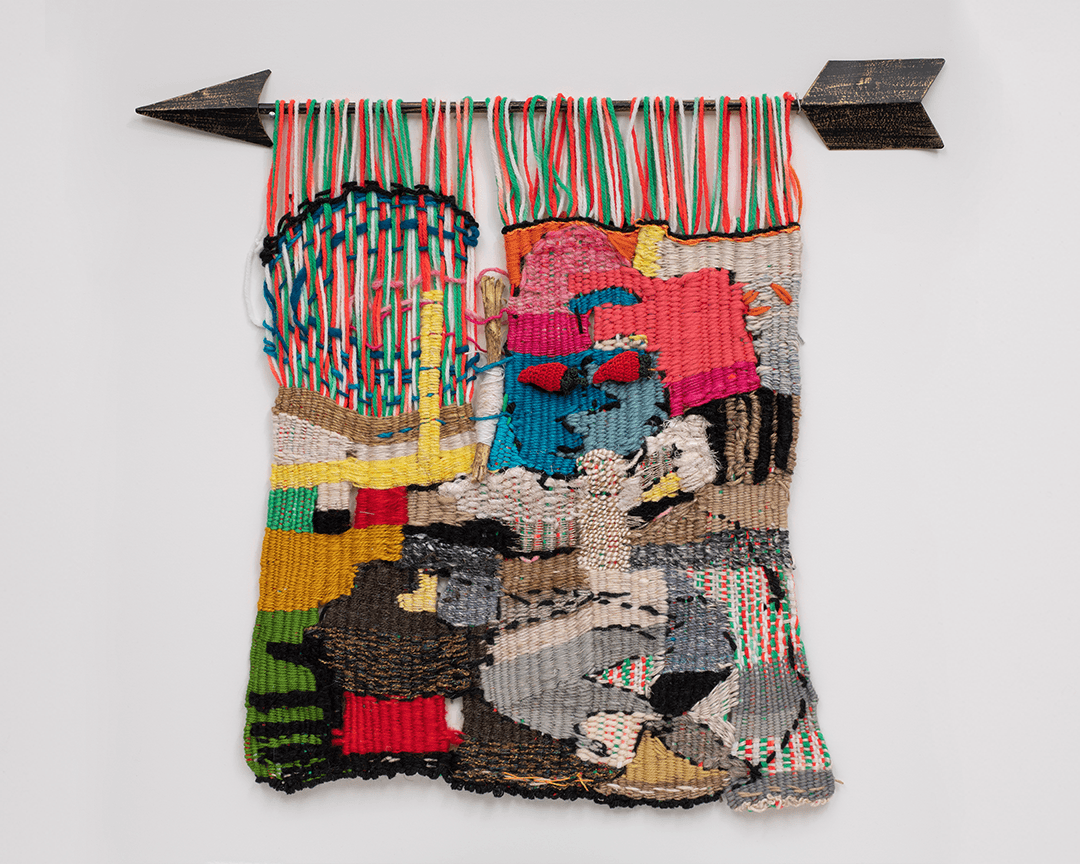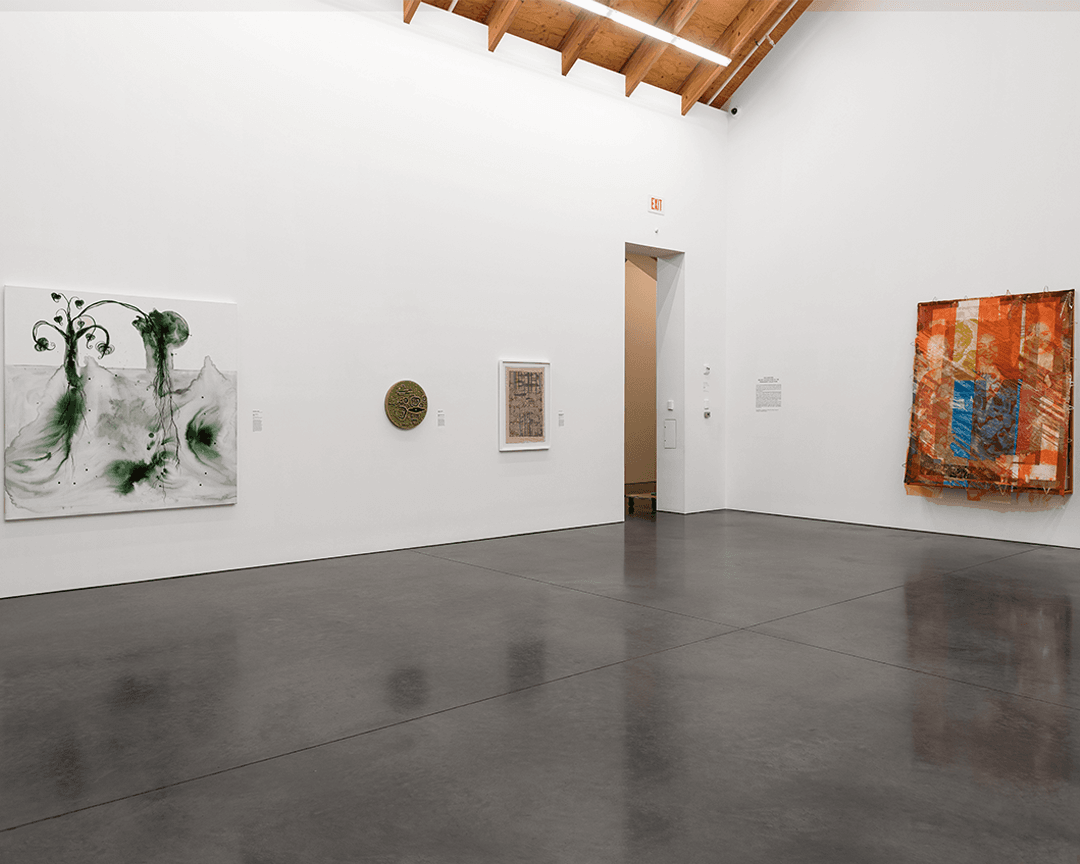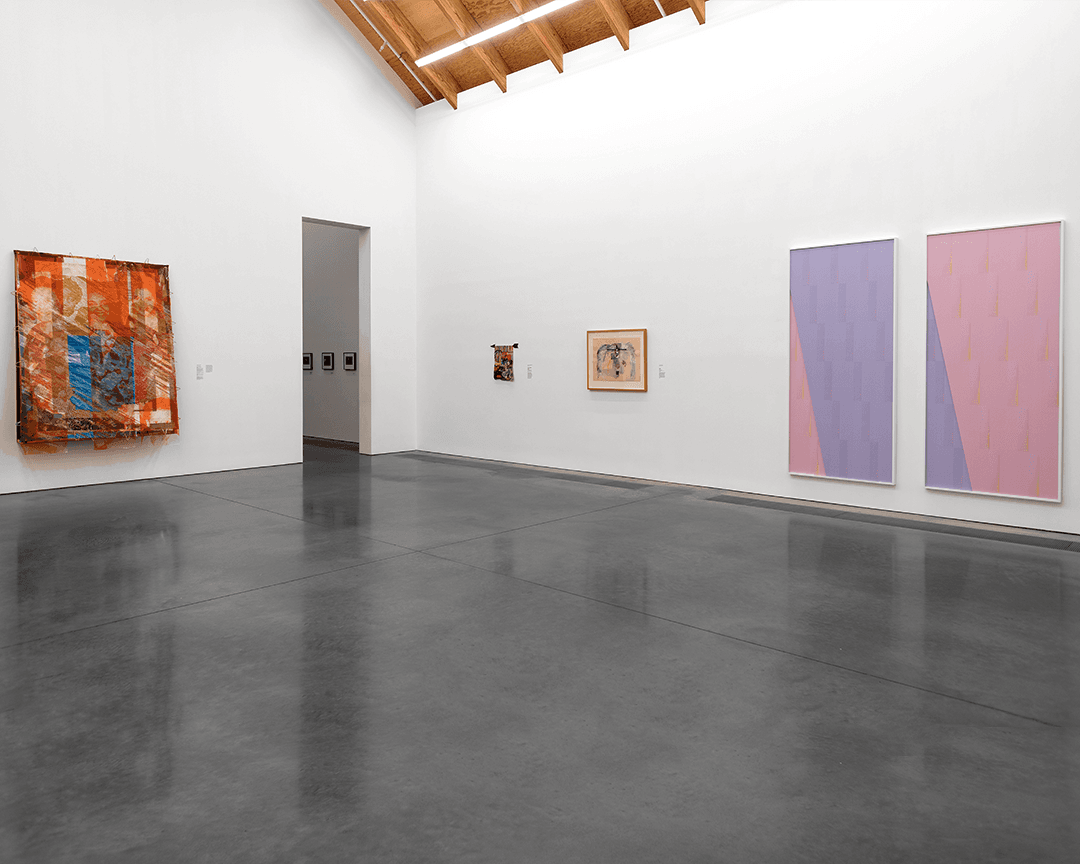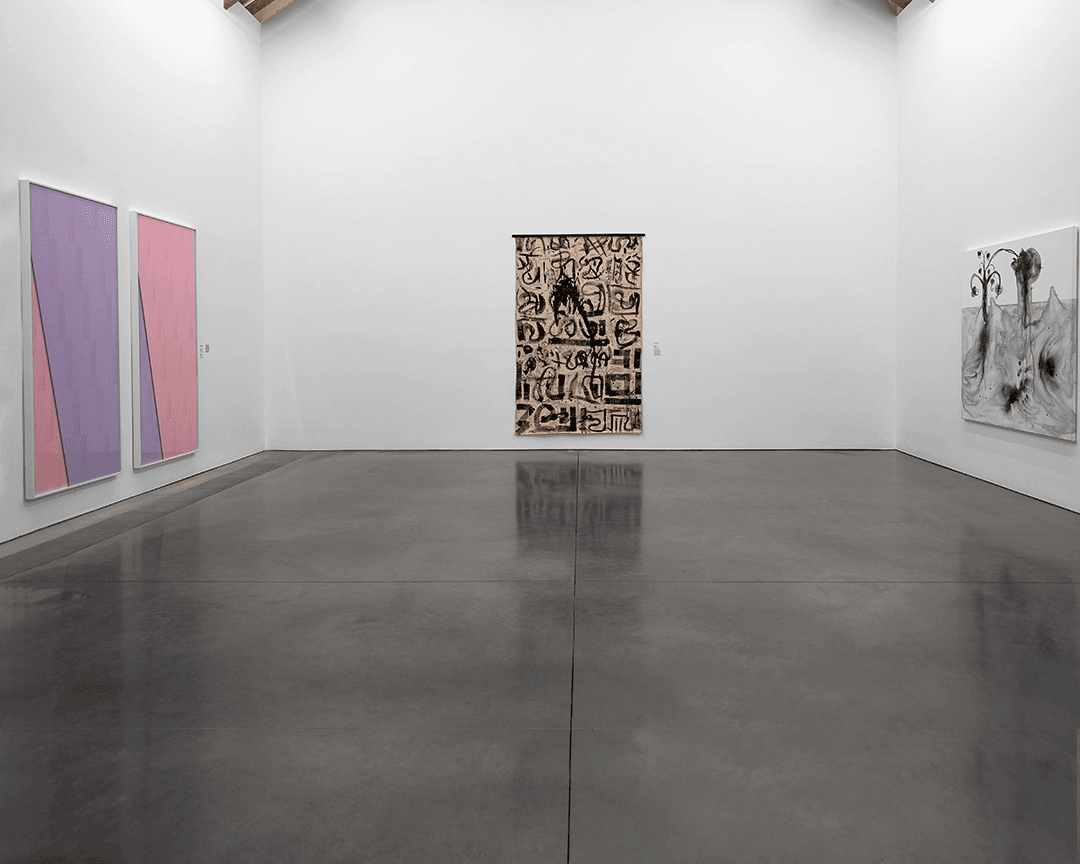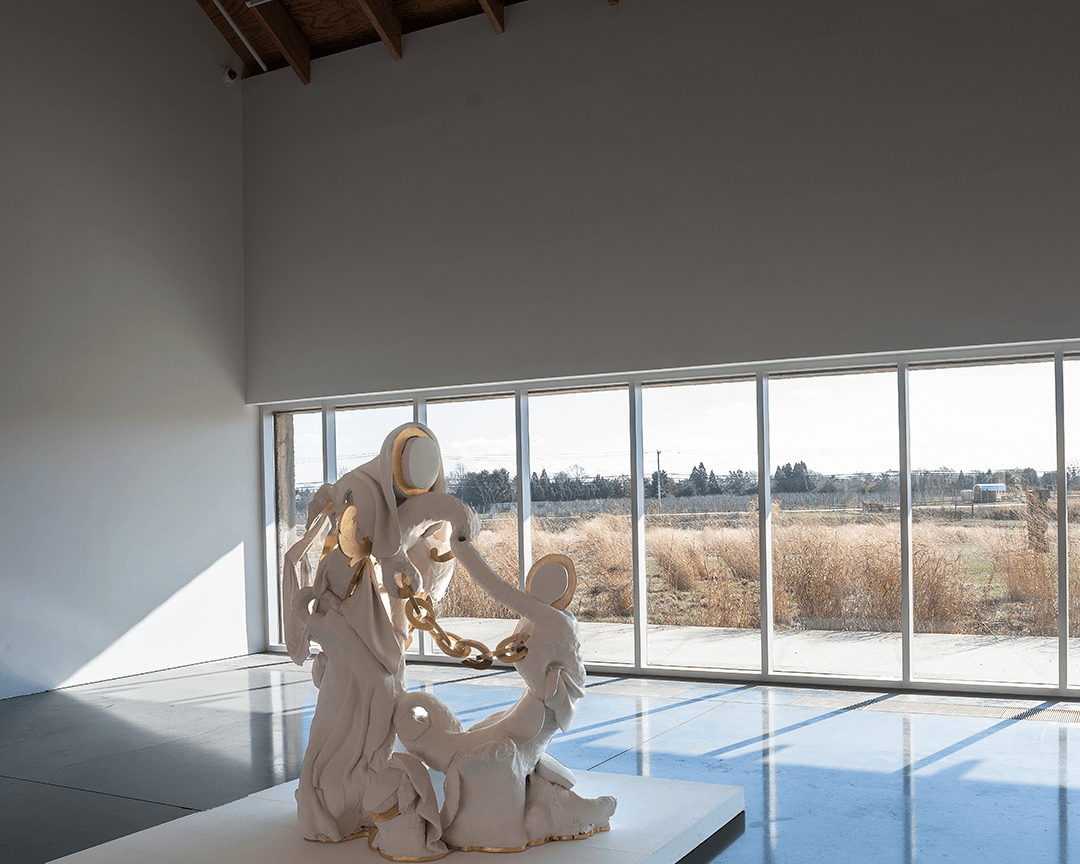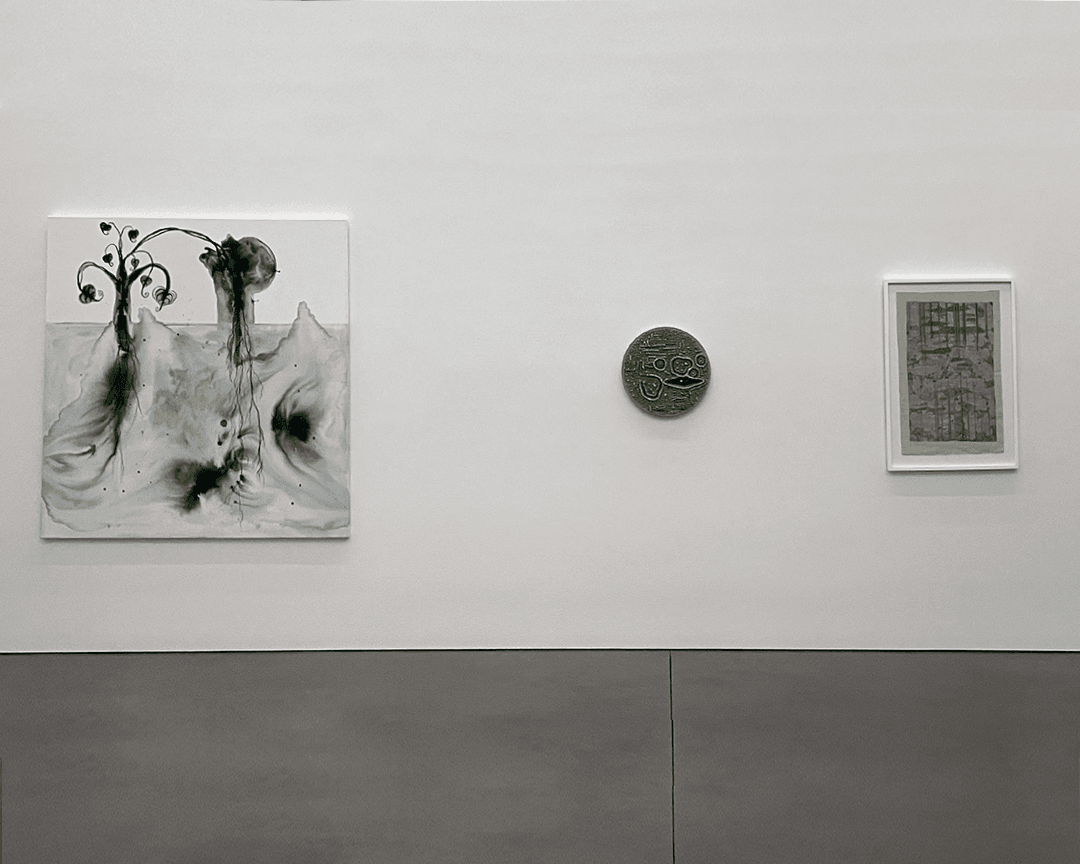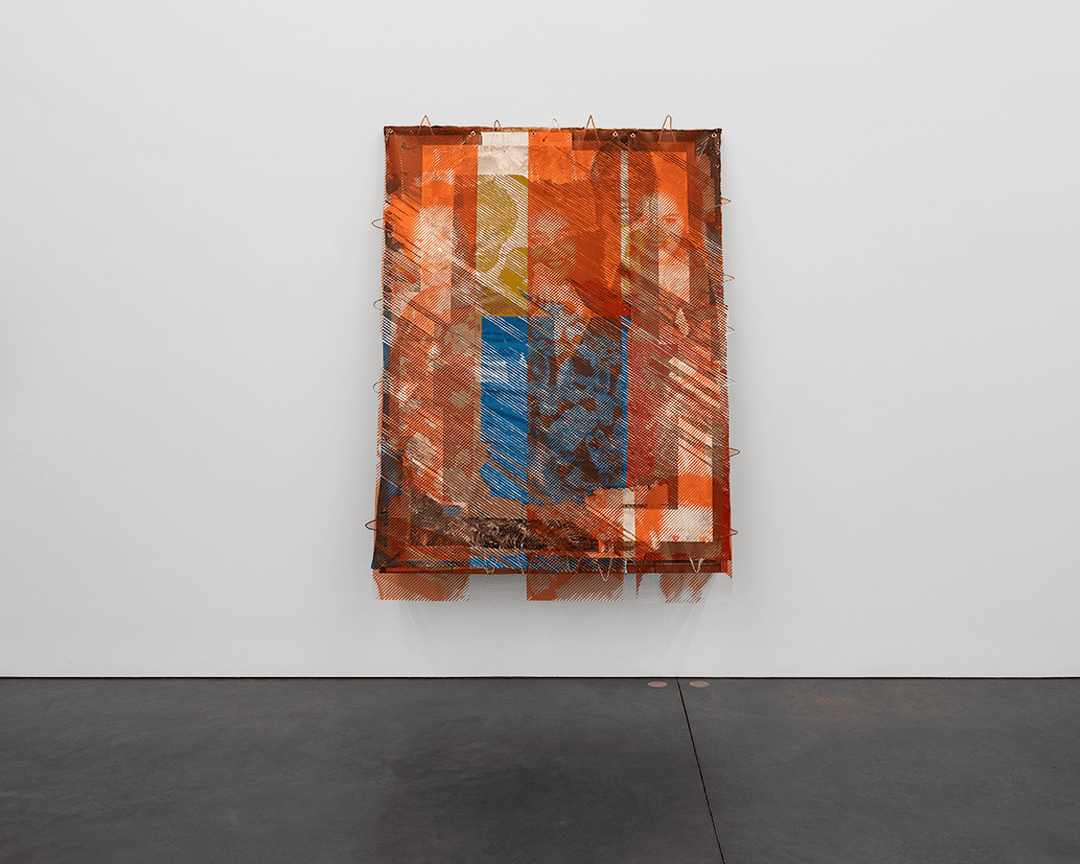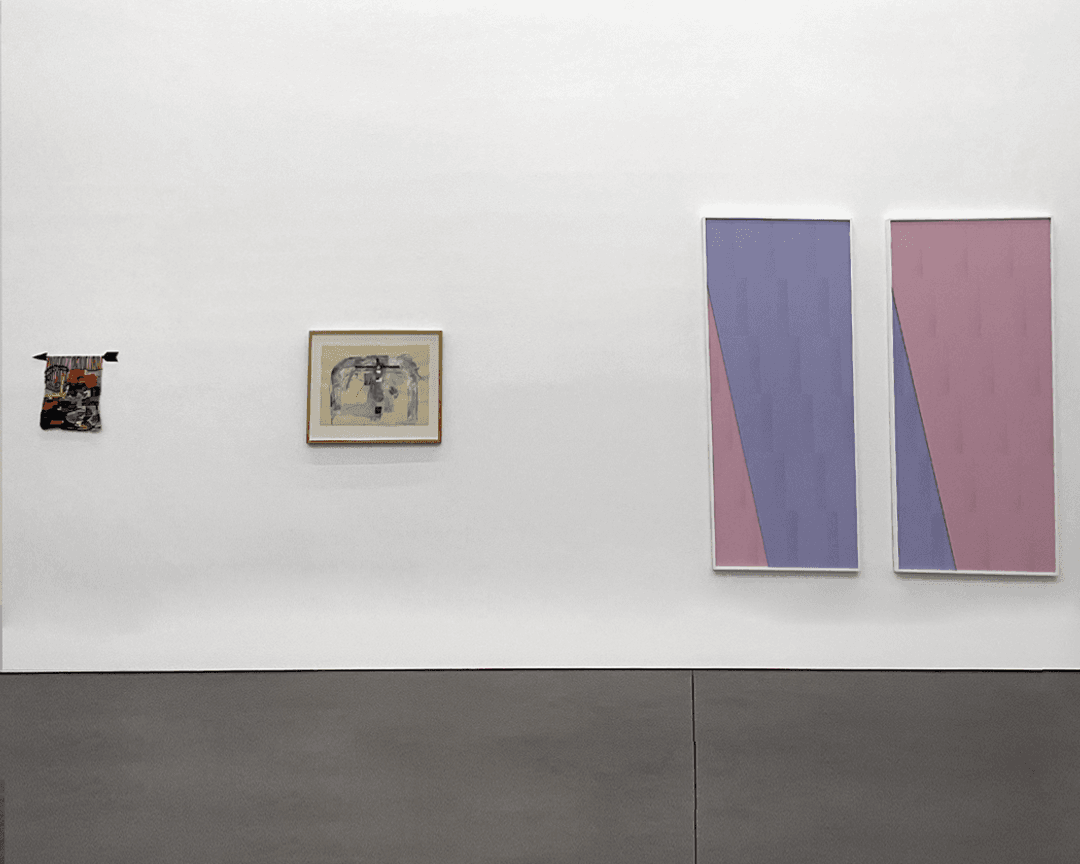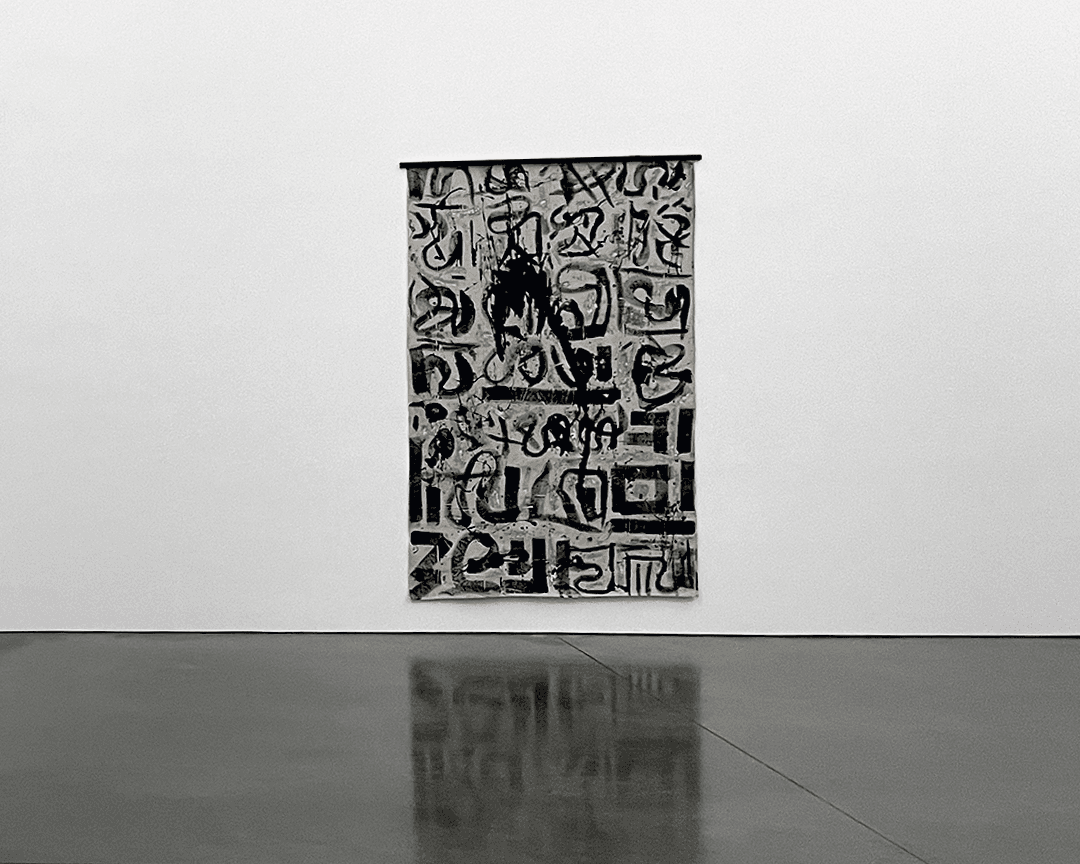A display of recent acquisitions by the Parrish Art Museum, Encounters brings together works by artists who have a special relationship to the East End of Long Island. This diverse group of makers includes some who were born and raised in the region, others who have maintained homes and studios here for decades, and several who have spent time here as artists-in-residence.
Each artist demonstrates deep engagement with the local environment and community. Darlene Charneco, Laurie Lambrecht, Barthélémy Toguo, and Sara VanDerBeek explore the particular flora and fauna, water, and light of the East End. Esly E. Escobar evokes an alter ego in drip painting. Candace Hill Montgomery weaves together personal narratives and social commentary while Tomashi Jackson brings to light the history of communities of color. Frank Wimberley communicates through his own language of abstraction. Rachel Feinstein merges characters drawn from oppositions and tensions in sculpture.
Some of these artists may be known to visitors as participants in Parrish Road Show, the Museum’s ongoing series of off-site exhibitions in local nature preserves, bays, highways, and arts and cultural centers. Others were specially commissioned to create new work for the Museum. Seen together, their art shines a light on the vibrant, varied creativity of the East End.
This exhibition is organized by Corinne Erni, Senior Curator of ArtsReach and Special Projects.
Darlene Charneco examines human settlements, forms of interaction, and evolution through a biological lens. By hammering nails into wooden panels in a meditative process, she generates positive wishes for humanity. Mutual Medicine Flower considers the symbiotic coevolution of insects and plants. The work is part of her Weaves and Touchmaps series of wall reliefs inspired by dreams, visions, nature studies, and universal rituals. In 2021, it was included in Charneco’s exhibition Symbiosome Schoolhouse, a Parrish Road Show at the Oysterponds Historical Society, in Orient.
Westhampton-based artist Esly E. Escobar works in abstraction, readymade found art, and collage, and often combines oils, acrylics, and enamels into a single painting. Laying his canvases on the floor, he drips paint until a character is revealed. “This piece came at a time when creativity hit me, and I had no funds to get the usual materials,” he said. “I got black paint and raw canvas. I painted the hieroglyphics that I have been scribbling on my notebooks and threw some paint on top and it created Goofie Goo, a cool character. This painting represents the everyday struggle to make a dollar.”
A Bridgehampton native, Laurie Lambrecht experiments with photography, weaving, embroidery, and knitting to create what she calls “visual conversations.” For her Bark/Cloth series, she printed photographs of tree barks onto fabric and delicately embroidered them with multicolored threads. The series informed the works she made for Limn to Limb, her Parrish Road Show at the Madoo Conservancy, in Sagaponack, in 2019. There, she printed photographs of the nature reserve’s trees, flowers, and structures onto large pieces of cloth, which she subsequently cut up to create other woven works or wrapped around trees.
Sara VanDerBeek’s quiet, semi-abstract photographs consider the historically feminist dialectic of so-called women’s work. To create these images, which feature a Lightning Strike quilt pattern, VanDerBeek built sculptural forms that she positioned and re-positioned outside her home in Springs. She manipulated the sculptures to cast particular shadows and capture the light of the East End. These two photographs belong to the 2016 series Pieced Quilts, for which VanDerBeek drew inspiration from American quilts, Pre-Colombian textiles and ceramics, and weavings by female members of the Bauhaus weaving workshop.
Frank Wimberley is acclaimed for his tactile, multilayered work infused with bold colors and dramatic, gestural strokes. “Abstract Expressionism is like a thumbprint,” he has said, “it is simultaneously absolutely personal and universal.” For decades, Wimberley has lived in Azurest, which is part of Sag Harbor Hills, Azurest, and Ninevah Beach Subdivisions Historic District (SANS). The beachfront community was founded after World War II as a summer retreat for middle-class African American families.
In The Pink Pussyhatted’s Dark Blue Cambridge Mysteries, Candace Hill Montgomery examines the #MeToo movement, using cozy material to tackle uncomfortable topics. The Bridgehampton-based artist makes weavings that reference her own life and sociopolitical challenges. Made on handmade looms, her works are often mounted on vintage farm equipment. Hill Montgomery first showed her weavings at the Sag Harbor Whaling & Historical Museum as a Parrish Road Show artist in 2019. Her connection to fashion and textiles dates back to her childhood—her grandmother taught her knitting, embroidery, and crocheting.
Tomashi Jackson works across painting, textiles, sculpture, and video to explore histories of disenfranchisement of people of color. The resulting compositions resonate with bold geometries, exuberant color, and intricate layering of material. For The Land Claim, a recent exhibition at the Parrish, she created paintings while in residence at The Watermill Center as Inga Maren Otto Fellow. She was inspired by interviews with members of Indigenous, Black, and Latinx communities. The Three Sisters speaks to the importance of matriarchy, incorporating images of intergenerational groups of women. The title refers to the Indigenous farming method of planting corn, squash, and beans together. Each crop helps the others to grow and thrive.
In Barthélémy Toguo’s own words, “Homo Planta is the theatricalization of a universe that becomes totally vegetal. The characters become mutant plant bodies that begin to dance. It’s a choreography with moving lianas, touching leaves, extending bodies. We must respect and protect the planet. When there are no more plants, there is death.” Toguo created Homo Planta A when surrounded by nature while in residence as Inga Maren Otto Fellow at The Watermill Center. The work was part of his exhibition The Beauty of Our Voice at the Parrish in 2018. An artist who works with photography, performance, and installation, Toguo founded Bandjoun Station, a cultural center, artist residency, and sustainable farm in Cameroon. He was recently designated Artist for Peace by UNESCO.
North Fork- and New York-based artist Rachel Feinstein has maintained a career-long interest in the Rococo. This work evolved from images of a small, eighteenth-century porcelain sculpture by Konrad Linck, a designer at the Frankenthal Porcelain Manufactory in Mannheim, Germany. Linck became famous for his dramatic allegorical subjects, such as Religious Group, the Christ-like figure surrounded by angels that inspired See You Soon. Feinstein’s life-sized plaster interpretation, with a heavy gold-leaf chain that connects the abstracted figures, evokes the dark side of the Rococo’s aristocratic origins and over-the-top ornateness. For her, the exuberant decadence of the aristocracy foreshadowed the rise of fascism.


